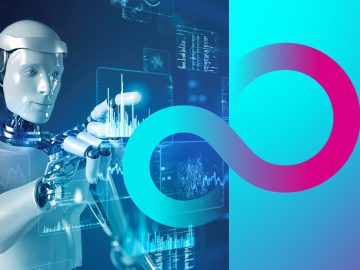Market research firm Gartner yesterday published its 2024 Hype Cycle for Emerging Technologies, and the study revealed that generative AI (genAI) has passed the “peak of inflated expectations” and is now sliding down into the “trough of disillusionment.”
Along with genAI, AI-augmented software engineering is also heading down the slope, after passing its inflated expectations in markets, according to Gartner, whose Hype Cycle describes the hot ascent and eventual cooling off of technology adoption.
Gartner
AI-assisted code generation tools are increasingly prevalent in software engineering, and somewhat unexpectedly have become low-hanging fruit for most organizations experimenting with genAI. Adoption rates are skyrocketing. That’s because even if they only suggest a baseline of code for a new application, automation tools can eliminate hours that otherwise would have been devoted to manual code creation and updating.
Hitting the peak of inflated expectations is prompt engineering, according to Gartner. While most large language models like OpenAI’s GPT-4 are pre-filled with massive amounts of information, “prompt engineering,” a way of training the algorithm, allows genAI to be tailored for specific industry or even organizational use.
GenAI interest wanes as ROI becomes the focus
Excitement around foundation models, such as Google Gemini, Anthropic Claude, Amazon Bedrock, and OpenAI GPT-4, is waning among enterprises as companies instead seek concrete returns on investment (ROI). These days, companies are more often than not deploying genAI only for use cases that drive ROI, according to Arun Chandrasekaran, a Gartner distinguished vice president analyst.
“Generative AI is sliding through the trough of disillusionment due to mismatch between high expectations vs. reality, enterprise challenges in maturing their data engineering and AI governance, as well as intangible ROI of many genAI initiatives,” Chandrasekaran said.
While the technology has been heralded as a boon to productivity, nailing down an ROI in genAI can prove to be elusive. That’s not necessarily because finding ROI is difficult, but expressing ROI has been difficult because many benefits like productivity have indirect or non-financial impacts that create financial outcomes in the future, according to Rita Sallam, a distinguished vice president analyst at Gartner.
Gartner’s trough of disillusionment describes a time when interest wanes as experiments and implementations fail to deliver on the initial hype of a technology. Producers of the technology shake out or fail. Investment continues only if the surviving providers improve their products to the satisfaction of early adopters, according to Gartner.
AI agents step into the spotlight
But far from a negative effect, the trough of disillusionment can lead to what Gartner describes as the “plateau of productivity,” when mainstream adoption starts to take off. It also means enterprise focus on ROI will likely spur adoption of autonomous AI in the form of AI agents — something with a more solid potential for productivity and efficiency gains.
An AI agent is a software program that collects data and uses the data to perform self-determined tasks to meet predetermined goals. For example, an AI agent could act as a customer care representative and automatically ask the customer different questions, look up information in internal documents, and respond with a solution. Based on the customer responses, it determines if it can resolve the query itself or pass it on to a human.
By 2030, companies will spend $42 billion a year on genAI projects such as chatbots, research, writing, and summarization tools, according to Gartner.
Autonomous AI systems can operate with minimal human oversight. They seek to “understand” their environment, draw conclusions from it and adjust their actions accordingly, according to Chandrasekaran.
“They can make decisions, purchase things and perform tasks, achieving goals in a range of environments as effectively as humans can. Systems that can perform any task a human can perform are beginning to move slowly from science fiction to reality,” he said.
While the current generation of AI models lack “agency,” AI research labs are quickly releasing agents that can dynamically interact with their environment to achieve goals, although it will be a gradual process, Chandrasekaran noted.
An eye on other emerging tech
“Even as AI continues to grab the attention, CIOs and other IT executives must also examine other emerging technologies with transformational potential for developers, security, and customer and employee experience and strategize how to exploit these technologies in line with their organizations’ ability to handle unproven technologies,” Chandrasekaran said.
Gartner said its Hype Cycle for Emerging Technologies is unique among the company’s other Hype Cycles because it distills insights from more than 2,000 technologies and focuses on “must-know” emerging technologies.
“These technologies have potential to deliver transformational benefits over the next two to 10 years,” Gartner said.
Autonomous AI software was among four emerging technologies called out in the report because it can operate with minimal human oversight, improve itself, and become effective at decision-making in complex environments.
“These advanced AI systems that can perform any task a human can perform are beginning to move slowly from science fiction to reality,” Gartner said in its report. “These technologies include multiagent systems, large action models, machine customers, humanoid working robots, autonomous agents, and reinforcement learning.”
Autonomous agents are currently heading up the slope to the peak of inflated expectations. Just ahead of autonomous agents on that slope is artificial general intelligence, currently a hypothetical form of AI where a machine learns and thinks like a human does.
GenAI technologies are evolving at a rapid pace, Chandrasekaran noted, and the innovation continues at a rapid pace, which can be overwhelming enterprise IT leaders.
“Many enterprises are also realizing that genAI alone may not be a panacea for all their use cases, and they need to combine it with other AI techniques for meaningful value,” Chandrasekaran said. “The long-term potential of generative AI will still be significant, but enterprise IT leaders need to address the near-term risks to reach the plateau of productivity.”





